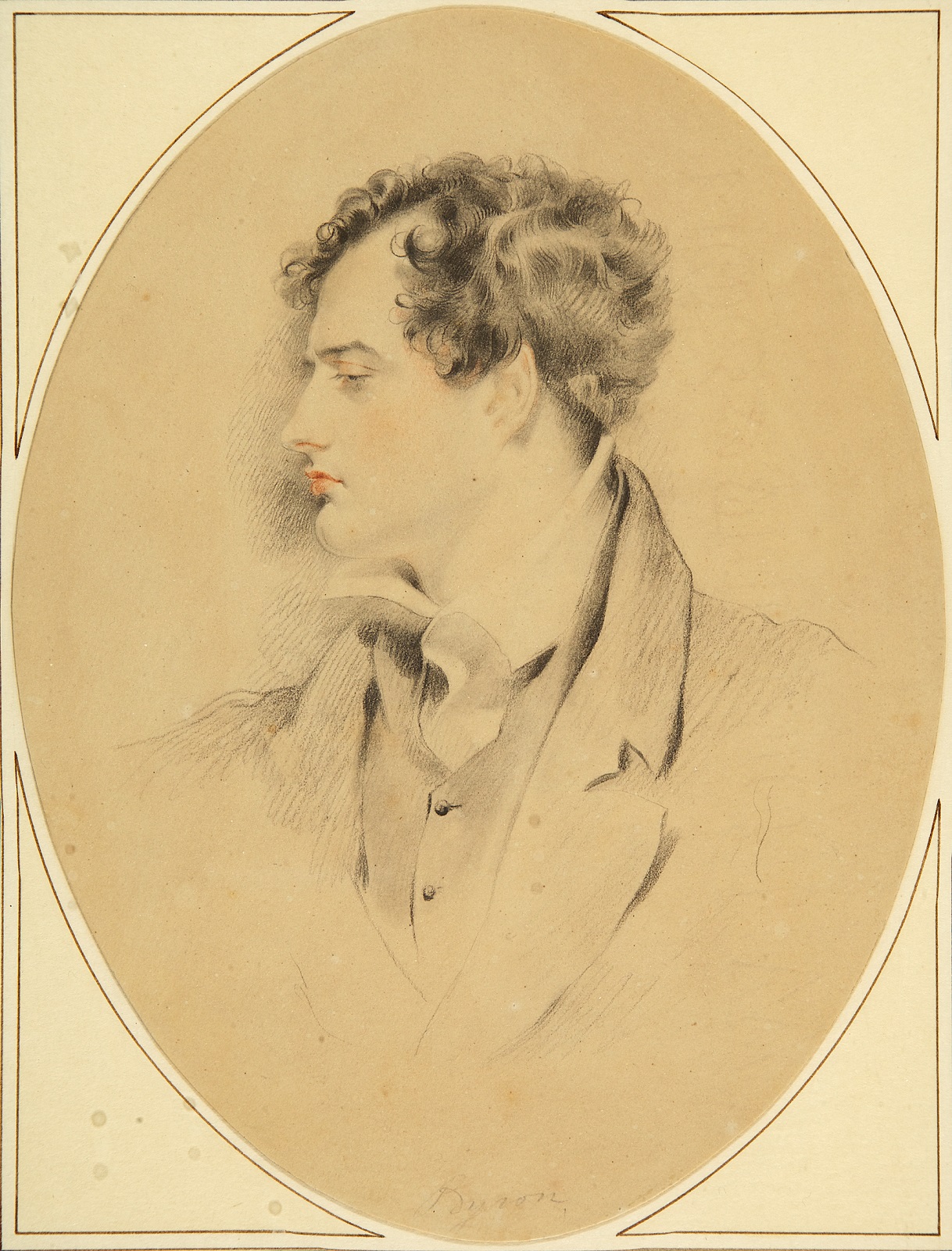Jane Austen and Lord Byron
To commemorate the 200th anniversary of Lord Byron's death on 19 April 1824, Dr Christine Kenyon Jones introduces Byron and Jane Austen - often presented as polar opposites, but here shown to share interests, work and sense of humour.Did Jane Austen and Lord Byron live at the same time?
Byron (born in 1788) was nearly 12 years younger than Austen. 2024 marks the bicentenary of Byron’s death and 2025 the 250th anniversary of Austen’s birth.
Did they have similar experiences?
They both lived through the industrial revolution, the Napoleonic wars and the Regency, but Austen was a country parson’s daughter clinging to gentility while Byron was a peer of the realm with large estates and an extravagant lifestyle. She was deliberately anonymous in her writing career; he was flamboyantly famous. She chose spinsterhood and modesty, while he was notoriously sexually promiscuous with both sexes. She earned less than £700 from her life’s writing, while he received more than £20,000.
Were they related?
Yes, they were distantly linked by marriage. When Byron’s great aunt Isabella married Sir William Musgrave in 1759 she became part of a family including William’s great uncle the Reverend James Musgrave, who was the husband of Catherine Perrot, Jane Austen’s mother’s great-aunt.
So not exactly a close relationship, and it seems that neither Austen nor Byron knew about the link between their families, although Austen was certainly aware of the Musgra(o)ves (one of whom was her godmother) and put their name to use in Persuasion, The Watsons and the early ‘Collection of Letters’.
Did they ever meet?
It seems that they didn’t, alas. They must have come quite close to it at Drury Lane Theatre, where they were both impassioned playgoers and admired actors such as Edmund Kean. In 1814, a nobleman invited Austen to join a literary circle at his London house in London, adding that ‘the celebrated Madame de Staël would be of the party’. But Austen immediately declined. Had she gone she might well have met Byron, who attended most of the soirées with de Staël. But actually de Staël called Austen’s work ‘vulgaire’, so they would probably not have got on.

Did they know each other’s work?
We know that Austen was familiar with Byron’s ‘Oriental Tales’ The Giaour (1813) and The Corsair (1814) because Anne Elliot and Captain Bewick discuss them in Persuasion. Austen also copied out Byron’s poem ‘Napoleon’s Farewell’, making small changes and creating an even more sympathetic portrait of the Emperor than Byron did.
Byron’s humorous works, such as Beppo, The Vision of Judgment and Don Juan, were all published after Austen’s death. She might well have enjoyed them because, as Peter W Graham has commented, they were ‘the two great Romantic writers with a sense of humour’.
It’s often assumed that Byron didn’t know of Austen’s work but, thanks to recent analysis of the sales catalogues for his book collection, we now know he owned first editions of Sense and Sensibility, Pride and Prejudice and Emma. The copy of Emma was a gift to Byron in 1815 from the publisher John Murray, who was by this time Austen’s publisher too.
Dr Christine Kenyon Jones is a writer and lecturer, and a Research Fellow in the Department of English at King’s College London. She is an expert on Lord Byron, Jane Austen and the Romantic and Regency period.
Her recent book Jane Austen and Lord Byron: Regency Relations (Bloomsbury, 2024) brings together these two great authors and shows how they were closer than you think, even in their own day. Find out more


